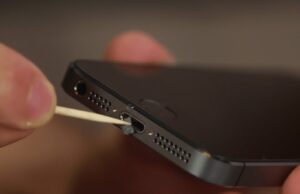Can you remove a fuse with the battery connected? The answer is no, attempting to remove a fuse with the battery connected can have potentially dangerous consequences. However, worry not because there is a solution to this predicament. In this article, we will explore why it is important to disconnect the battery before removing a fuse, and provide you with the proper steps to ensure your safety. So, if you’ve ever wondered about removing a fuse with the battery connected, read on to find out the best approach to tackle this issue.
Can You Remove a Fuse with the Battery Connected?
When it comes to dealing with electrical systems in vehicles, it’s essential to understand the proper procedures to ensure safety. One common question that arises is whether it is possible to remove a fuse with the battery connected. In this article, we will explore this topic in detail, addressing any concerns and providing clear guidance on how to safely handle a fuse when the battery is connected.
Understanding Fuses and their Importance
Before we delve into the main question, let’s first understand what fuses are and why they are crucial components in a vehicle’s electrical system.
Fuses are safety devices designed to protect electrical circuits from excessive currents. They are usually made of a metal strip or wire that melts when a current higher than its rating flows through it. This action breaks the circuit, preventing damage to the wiring, components, and, ultimately, the vehicle itself.
The Role of Fuses in the Electrical System
The electrical system in a vehicle consists of various circuits, each responsible for powering specific components. Fuses are strategically placed in these circuits to protect them in case of a fault or malfunction. Here are some key roles of fuses in a vehicle’s electrical system:
- Preventing overheating and fires: Fuses help avoid excessive current flow, which could lead to overheating and potential fires.
- Shielding sensitive components: Sudden surges in current can damage sensitive electronic components. Fuses act as a barrier, ensuring that only the approved amount of current reaches these components.
- Minimizing electrical damage: By breaking the circuit when a fault occurs, fuses help prevent damage to the wiring and other electrical components.
Considering the importance of fuses in maintaining the integrity of the electrical system, it’s crucial to handle them with care and follow the correct procedures.
Removing a Fuse with the Battery Connected: Safety Precautions
Now let’s address the main question: Can you remove a fuse with the battery connected? The answer is both yes and no. While it is technically possible to remove a fuse with the battery connected, it is generally not recommended due to the potential risks involved. Here’s why:
Risk of Electrical Shock
Removing a fuse while the battery is connected exposes you to the risk of electrical shock. The fuse protects the circuit from excessive current, and removing it can cause the current to flow freely, potentially leading to an electrical hazard. To avoid the risk of electrical shock, it is best to disconnect the power source before handling fuses.
Possible Damage to the Fuse or Circuit
Pulling out a fuse with the battery connected can result in arcing, which is the electrical discharge that occurs when the fuse contacts are separated. This arcing can damage the fuse or even the circuit it is protecting. In some cases, the fuse may blow or become permanently damaged, necessitating a replacement.
The Correct Way to Remove a Fuse
To ensure safety and prevent any potential damage, it is recommended to follow these steps when removing a fuse:
- Disconnect the power source: Before removing a fuse, turn off the ignition and disconnect the battery.
- Locate the fuse box: The fuse box is usually located under the dashboard or in the engine compartment. Refer to your vehicle’s manual to find the exact location.
- Identify the faulty fuse: Look for the fuse that corresponds to the malfunctioning circuit. Most fuse boxes have a diagram or labeling system to help you identify the correct fuse.
- Use a fuse puller or pliers: Using a fuse puller or a pair of pliers specifically designed for this purpose, firmly grip the fuse and pull it straight out. Avoid using excessive force to prevent damage to the fuse or the fuse box.
- Inspect the fuse: Once removed, visually inspect the fuse for any signs of damage, such as a blown filament or discoloration. If the fuse is damaged, replace it with a new one of the same rating.
- Reinstall the fuse: Insert the new fuse or the previously removed fuse back into the appropriate slot. Ensure it fits snugly but avoid forcing it.
- Reconnect the power source: Once the fuse is securely in place, reconnect the battery and turn on the ignition to test the repaired circuit.
Seek Professional Assistance
If you are unsure or uncomfortable handling fuses or any electrical components, it is always best to seek professional assistance. Automotive technicians have the expertise and tools necessary to diagnose and repair electrical issues safely.
While it is technically possible to remove a fuse with the battery connected, it is not recommended due to the potential risks involved. Electrical shock and damage to the fuse or circuit are among the primary concerns. Following the correct procedures, including disconnecting the power source, is crucial for safety. Remember, if you are uncertain about handling fuses or any electrical components, it’s best to consult a professional. By prioritizing safety and adhering to proper procedures, you can effectively handle fuses and maintain the integrity of your vehicle’s electrical system.
Frequently Asked Questions
Can you remove a fuse with the battery connected?
Yes, it is generally safe to remove a fuse with the battery connected. However, it is recommended to take certain precautions to avoid any potential risks.
What precautions should I take before removing a fuse with the battery connected?
Before removing a fuse with the battery connected, it is important to follow these precautions:
- Make sure to turn off the power to the device or system that is associated with the fuse.
- Wear protective gloves and eyewear to prevent any potential injury.
- Use a fuse puller or insulated pliers specifically designed for removing fuses to minimize the risk of electrical shock.
Why should I turn off the power before removing a fuse?
Turning off the power to the device or system associated with the fuse ensures that no electrical current is flowing through it. This step is crucial to avoid any potential electrical shock or damage to the fuse.
What can happen if I remove a fuse with the battery connected without taking precautions?
If you remove a fuse without taking proper precautions, there is a possibility of electrical shock or damage to the fuse, device, or system. It is always better to follow the recommended precautions to ensure safety.
Are there any situations where removing a fuse with the battery connected is not recommended?
In certain situations, such as when the device or system is actively drawing power, it is advisable to disconnect the battery before removing the fuse. This prevents any accidental power surges or damage to the electrical components.
Can removing a fuse with the battery connected affect the performance of the device or system?
Removing a fuse with the battery connected should not directly affect the performance of the device or system. However, it is essential to ensure that the fuse is replaced correctly to maintain the proper functioning of the electrical circuit.
Final Thoughts
Removing a fuse with the battery connected can be a risky endeavor. It is not recommended to do so, as it carries the potential for serious damage or injury. By removing a fuse while the battery is connected, you risk short-circuiting the circuit and causing electrical damage. It is always best to disconnect the battery before attempting to remove a fuse to ensure safety. Therefore, it is crucial to avoid removing a fuse with the battery connected to prevent any potential hazards or harm.


